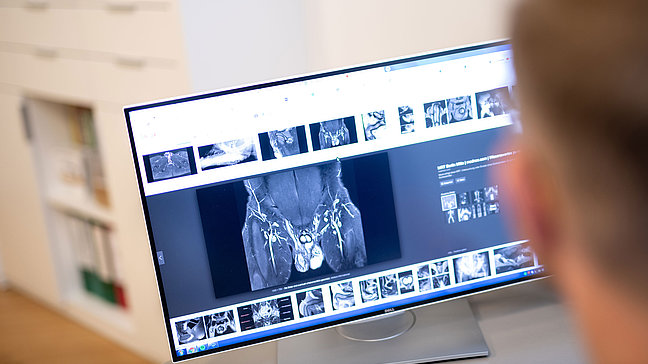
Vasectomy
Vasectomy for permanent contraception
Advantages
A vasectomy has no effect on sexual function or sexual desire. In fact, sex often becomes more relaxed, intimate, and fulfilling, as the procedure provides reliable protection against unintended pregnancy. By cutting and sealing the vas deferens, sperm can no longer reach the semen, making fertilization impossible.
Sensuality
A vasectomy does not affect pleasure or hormone production in the testicles. Studies even show that sexual satisfaction for women and men’s self-perception can improve after the procedure.
Ejaculation
Ejaculation remains virtually unchanged. The only difference is that no sperm are present in the semen. Both the volume and appearance remain the same, since seminal fluid is produced by the prostate and seminal vesicles.
Desire, Erection, and Orgasm
A vasectomy does not affect libido, erectile function, or orgasmic sensation.
Who is a vasectomy suitable for?
If you are over 25 and your family planning is complete, vasectomy may be the right choice. It is a safe, effective alternative to hormonal contraception for your partner – making it an option for the modern, responsible man.
How a vasectomy is performed
- Step: The information and consultation session
- Step: Reflection period
- Step: The vasectomy
- Step: Check-up and semen analysis
Preparation for the procedure
A detailed consultation is required before the procedure. As part of the legally mandated session, a urological examination and medical history are taken. We discuss the procedure, possible risks, and alternatives. The surgery date can then be scheduled.
Reflection period
Since a vasectomy is an elective procedure with long-term consequences (infertility), the law requires a short reflection period of several days between consultation and surgery.
The vasectomy
The operation is quick and painless under local anesthesia of the scrotal skin. We use the modern “no-scalpel” technique, which avoids injury to surrounding blood vessels. With specially designed instruments, a tiny opening of about 3–5 mm is made on each side of the scrotum. Through this access, the vas deferens are cut, sealed, and cauterized. The advantage: a few weeks later, no visible scars remain.
Follow-up and semen analysis
After the procedure, patients should rest, avoid strenuous activity for a few days, and use pain relief if necessary. It is essential to continue using other contraception until semen analysis confirms that sperm are no longer present.
Male sterilization – permanently infertile?
Sterilization is considered the most reliable method of male contraception and should be regarded as permanent. Although reversal surgery is possible, it does not always restore fertility. Therefore, men should be fully aware of this decision in advance.
Cost of a vasectomy
A vasectomy costs €890. This price includes:
the legally required consultation and counseling session a few days before the procedure
pre-medication
the vasectomy itself
After the 12th and 14th week following the procedure, semen analyses are performed to determine whether sperm are still present in the ejaculate. If no sperm are detected, you can enjoy your sex life spontaneously and safely from then on.
The first semen analysis after the 12th week is available for just €110.
The second semen analysis after the 14th week, including written medical confirmation of success, is free of charge.



